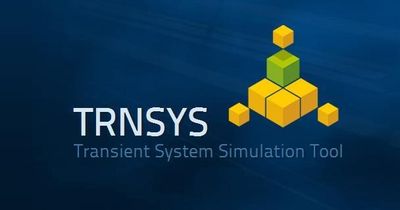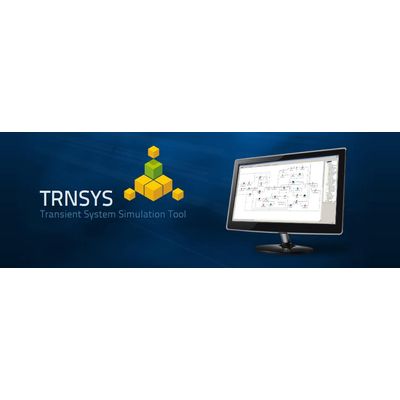

- Home
- Companies
- Thermal Energy System Specialists, LLC
- Products
- TRNSYS - Transient System Simulation ...

TRNSYS - Transient System Simulation Tool
TRNSYS (pronounced `tran-sis`) is an extremely flexible graphically based software environment used to simulate the behavior of transient systems. While the vast majority of simulations are focused on assessing the performance of thermal and electrical energy systems, TRNSYS can equally well be used to model other dynamic systems such as traffic flow, or biological processes.
TRNSYS has an extensive cross section of users worldwide that spans from researchers to consultants, engineers to building simulation experts, and students to architects. Because of the wide user-base, the tool`s long history, and its inherent flexibility, it is actively being used in many of the following applications:
- Central Plant Modeling
- Building Simulation (including LEED Energy Modeling)
- Solar Thermal Processes
- Ground Coupled Heat Transfer
- High Temperature Solar Applications
- Geothermal Heat Pump Systems
- Coupled Multizone Thermal/Airflow Modeling
- Optimization
- Energy System Research
- Emerging Technology Assessment
- Power Plants (Biomass, Cogeneration)
- Hydrogen Fuel Cell Systems
- Wind and Photovoltaic Systems
- Data and Simulation Calibration
The TRNSYS Simulation Studio serves as a robust, intuitive, graphical front end of the simulation, making the user`s job of assembling a detailed system a simple endeavor - similar in nature to hooking up the pipes and wires in a real system. The outputs of one component are graphically connected to the inputs of another. Since its inception of in the mid 1990`s, the Simulation Studio has replaced the need to manually edit the text input file.
Users can watch the value of ANY system variable on an online plot as the simulation progresses (any temperature, flow rate, heat transfer etc.). Output devices also allow the user great flexibility in integrating, printing, and reporting any component output value.
TRNSYS includes TRNSYS3D - a plugin for SketchUp™ that allows the user to draw multizone buildings and import the geometry (including building self-shading and internal view factors for radiation exchange) directly from the powerful SketchUp interface into the TRNSYS Building environment (TRNBuild).
TRNBuildTRNBuild is an interface for creating and editing all of the non-geometry information required by the TRNSYS Building Model. TRNBuild allows the user extensive flexibility in editing wall and layer material properties, creating ventilation and infiltration profiles, adding gains, defining radiant ceilings and floors, and positioning occupants for comfort calculations.
TypeStudioWith the release of v18, TRNSYS includes a Fortran environment and a graphical interface that allows users to quickly develop new Types, writing them, compiling them, and including them in simulations all without the need to purchase any kind of third party Fortran compiler or worry about compiler project setting compatibility.
TRNEditHistorically, the text-based TRNSYS input file was generated manually. The addition of the Simulation Studio in the mid-1990s greatly reduced the need for manual editing. However, the TRNSYS environment still includes TRNEdit, a full-featured text editor for writing and viewing TRNSYS input and output files and for running parametric TRNSYS simulations. TRNEdit also serves as the editor for manually generating stand-alone distributable TRNSYS simulations called TRNSED applications.
TRNSEDTRNSED allows users to develop customized graphical interfaces for specific applications and then distribute those applications to non-TRNSYS users. These "web-page like" TRNSED applications allow non-TRNSYS users to change system parameters, run simulations, and process output without having to learn the intricacies of the entire TRNSYS Environment. To obtain some of the TRNSYS-based TRNSED applications that TESS has developed, please visit the TESS Projects website.
TRNSYS is made up of two parts. The first is an engine (called the kernel) that reads and processes the input file, iteratively solves the system, determines convergence, and plots system variables. The kernel also provides utilities that (among other things) determine thermophysical properties, invert matrices, perform linear regressions, and interpolate external data files. The second part of TRNSYS is an extensive library of components, each of which models the performance of one part of the system. The standard library includes approximately 150 models ranging from pumps to multizone buildings, wind turbines to electrolyzers, weather data processors to economics routines, and basic HVAC equipment to cutting edge emerging technologies. Models are constructed in such a way that users can modify existing components or write their own, extending the capabilities of the environment.
After 35 years of commercial availability, TRNSYS continues to be a flexible, component-based software package that accommodates the ever-changing needs of both researchers and practitioners in the energy simulation community.
